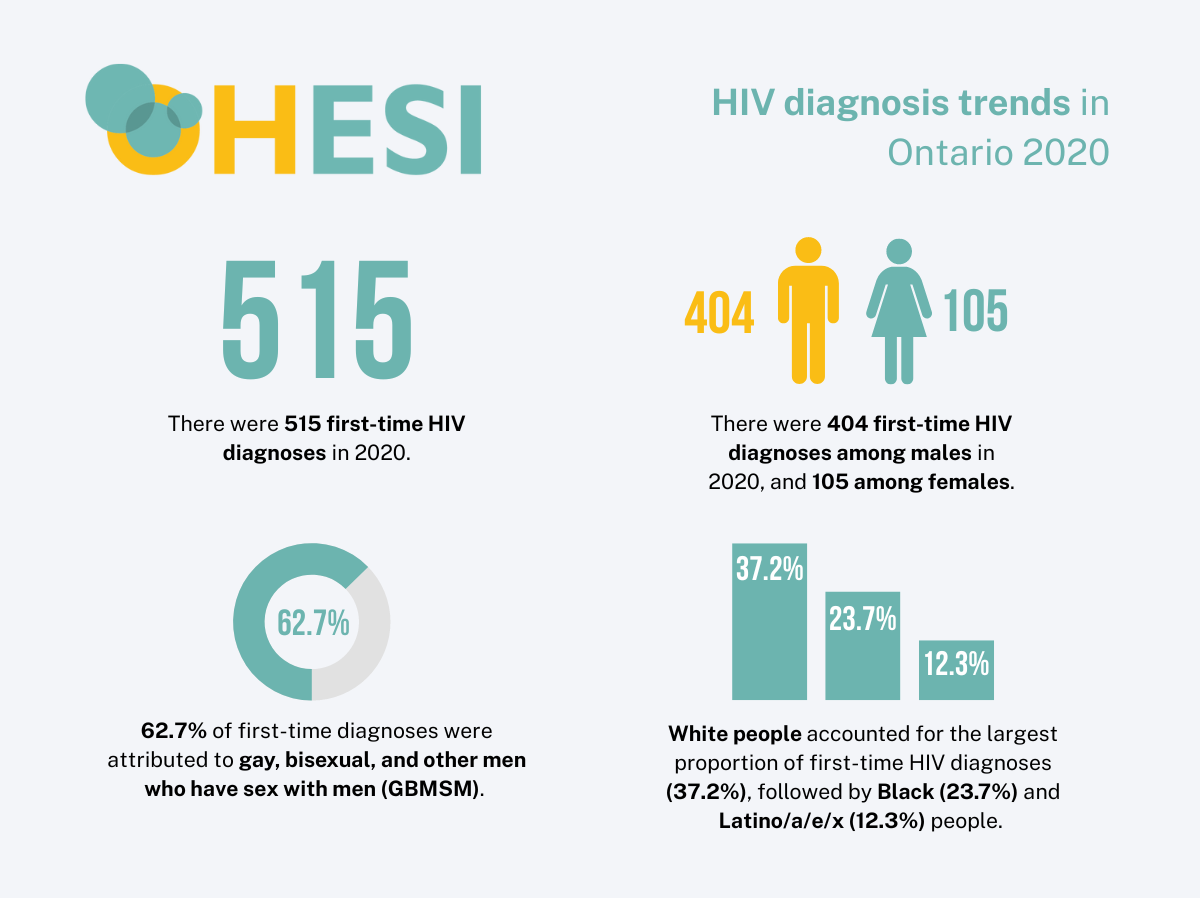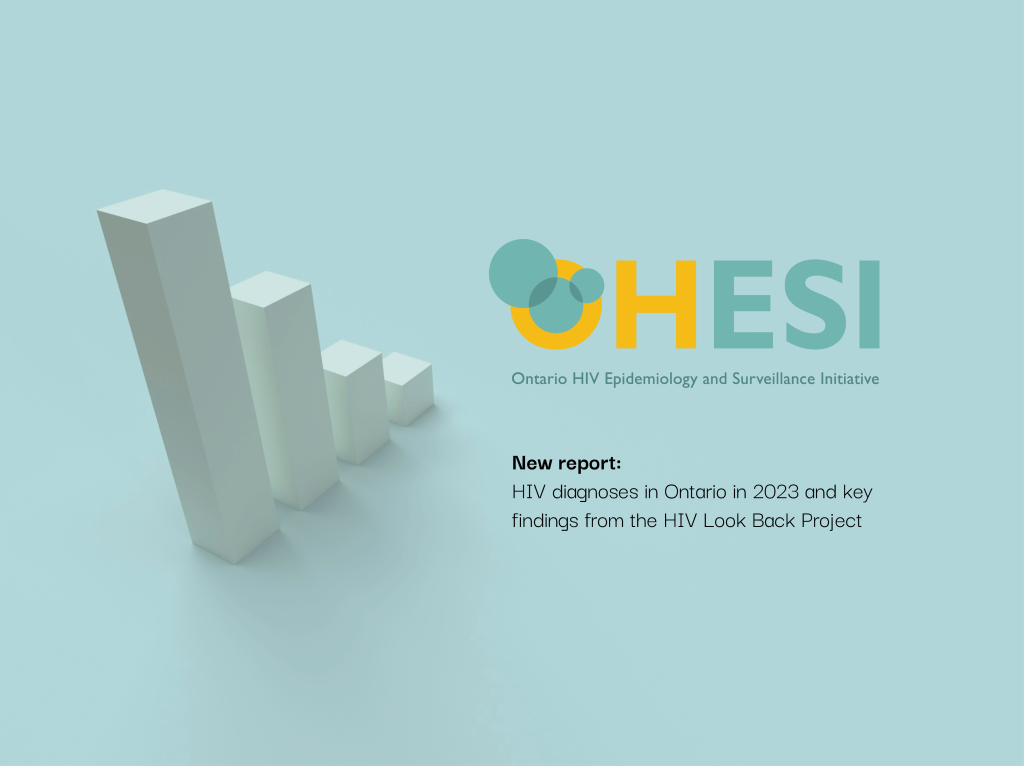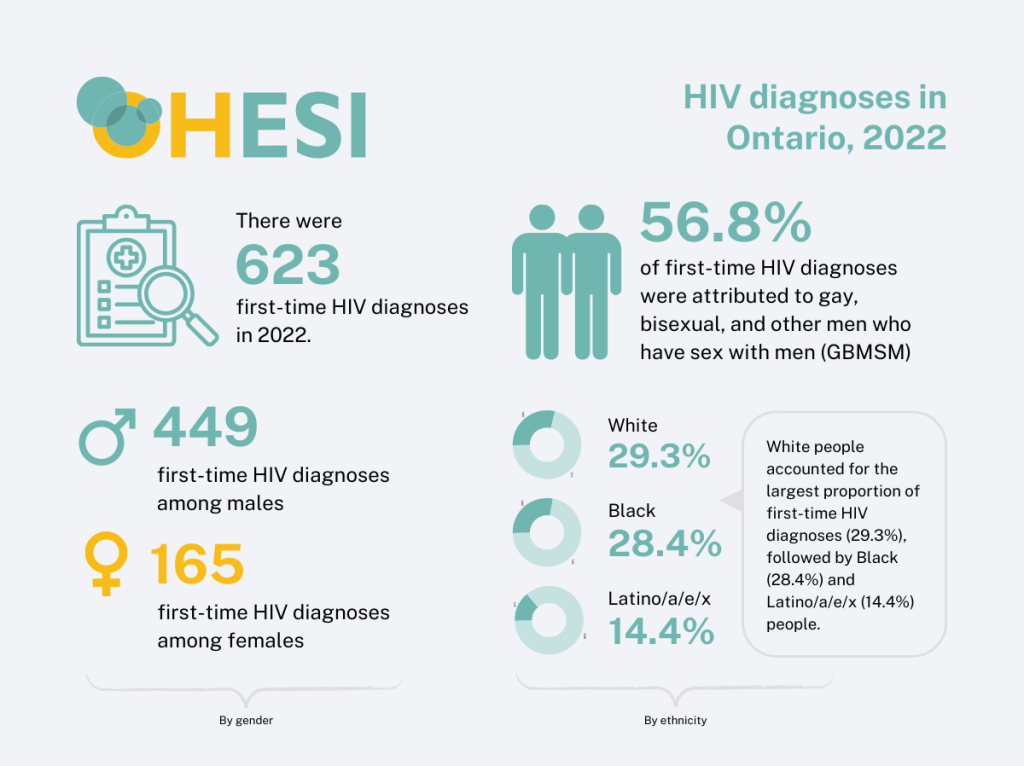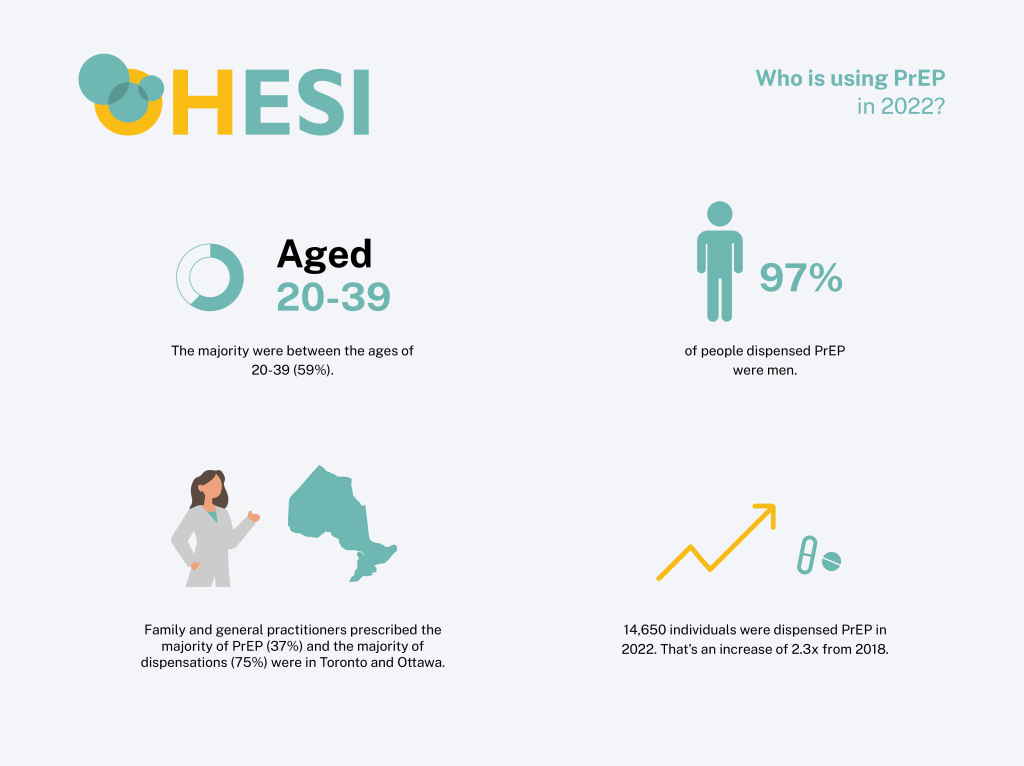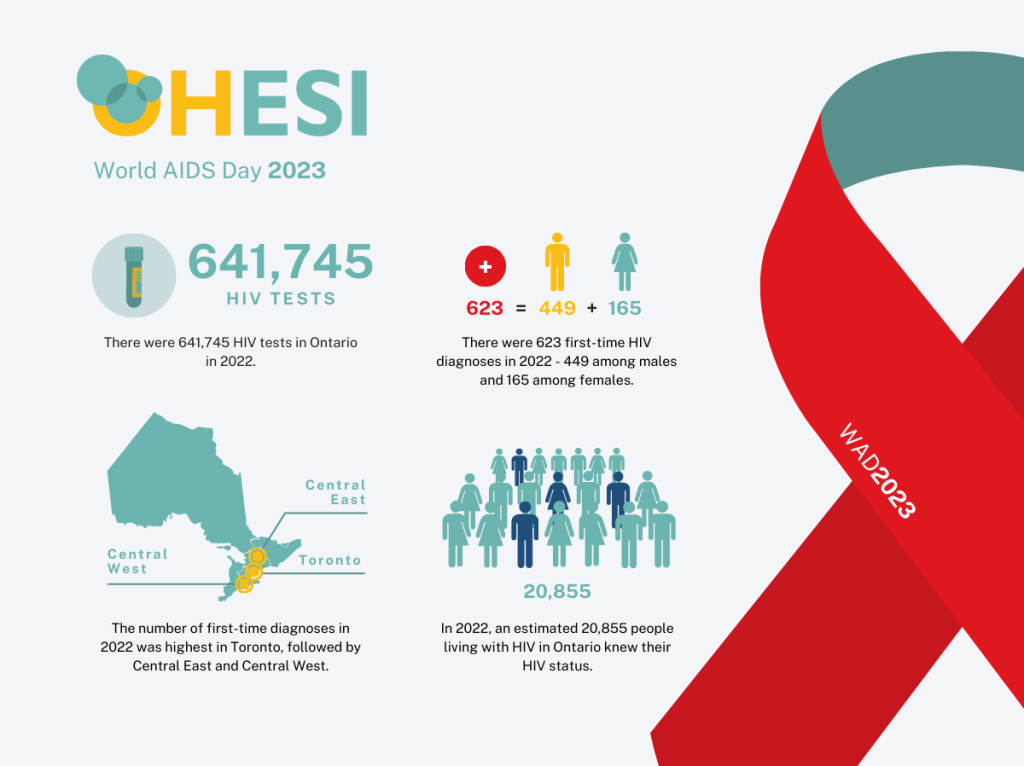Aug 22nd, 2022
New report on HIV diagnoses in Ontario 2020
Understanding trends in HIV diagnoses is essential to planning for HIV prevention as well as treatment and care programming and supports. The Ontario HIV Epidemiology and Surveillance Initiative (OHESI) is pleased to announce a new report: HIV diagnoses in Ontario, 2020. It describes trends in HIV diagnoses in Ontario over the past decade (2011-2020), with a focus on the recent impacts of the COVID-19 pandemic. It includes overall findings presented by sex, HIV exposure category, race/ethnicity, age, and geographic location, as well as trends among the populations in Ontario most affected by HIV: gay, bisexual and other men who have sex with men (GBMSM), people who inject drugs (PWID), people who are African, Caribbean, or Black (ACB), Indigenous Peoples, and cis and trans women, including those from the communities above, who face systemic and social inequities, and are more likely to be exposed to HIV through a sexual or drug using partner.
The COVID-19 pandemic affected access to HIV testing and clinical care in 2020. OHESI previously discussed its impact in our blog post, Impact of COVID-19 Pandemic on HIV testing and diagnosis in Ontario. This 2020 HIV Diagnoses Report elaborates on the changes seen in 2020. Key findings are highlighted in this blog post.
Trends should be interpreted with caution. The decreased numbers of diagnoses observed in 2020 may be due to a number of factors such as changes in access to HIV testing, decreased migration into the province by those previously diagnosed with HIV, and/or decreased HIV transmission related to COVID-19 public health measures and/or utilization of HIV pre-exposure prophylaxis.
Key findings from the 2020 HIV Diagnoses Report
HIV diagnoses down overall
Figure 1: Number of positive HIV tests, by first-time HIV diagnoses and previous evidence of HIV, Ontario, 2011 to 2020

The number of first-time HIV diagnoses decreased by 25% from 683 in 2019 to 515 in 2020. On a per capita basis, the rate of first-time HIV diagnoses in 2020 was 3.5 per 100,000, down from 4.7 in 2019: its lowest point since 1985.
Ontario reports surveillance data for:
- the number of first-time HIV diagnoses annually (our best indicator of the number of people who are learning their HIV status for the first time and were likely to have been infected in the province); and,
- people with previous evidence of HIV who are entering care in Ontario (including people who have migrated to Ontario and already knew their status).
Due to missing data on HIV test history, we estimate between 6.9% and 8.1% of first-time HIV diagnoses to have been potentially misclassified.
HIV diagnoses decreased in both males and females in 2020
Figure 2: Number of first-time HIV diagnoses, males and females, Ontario, 2011 to 2020

The number of first-time HIV diagnoses among males decreased by 21% from 514 in 2019 to 404 in 2020. Among females, the number of first-time HIV diagnoses decreased by 37% from 167 in 2019 to 105 in 2020. On a per capita basis, the rate of first-time HIV diagnoses in 2020 was 5.5 per 100,000 among males and 1.4 per 100,000 among females – both at their lowest points since the 1980s.
First-time HIV diagnoses by HIV exposure categories largely unchanged in 2020
Figure 3a: Number of first-time HIV diagnoses by HIV exposure category, Ontario, 2016 to 2020
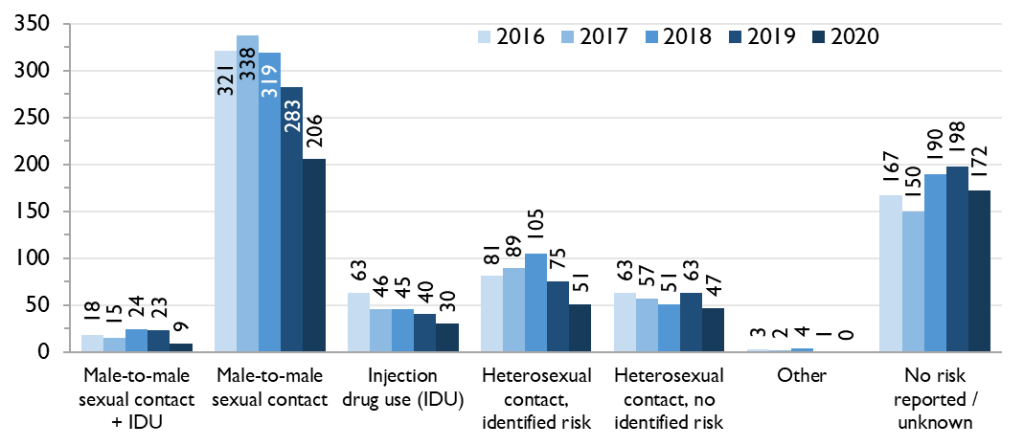
In 2020, the most frequently reported HIV exposure category was male-to-male sexual contact (206), followed by heterosexual contact with identified risk (51) and heterosexual contact with no identified risk (47). This pattern is consistent with the previous four years. The number of first-time HIV diagnoses decreased in all HIV exposure categories between 2019 and 2020.
Figure 3b: Percent of first-time HIV diagnoses by HIV exposure category (where reported), Ontario, 2016 to 2020
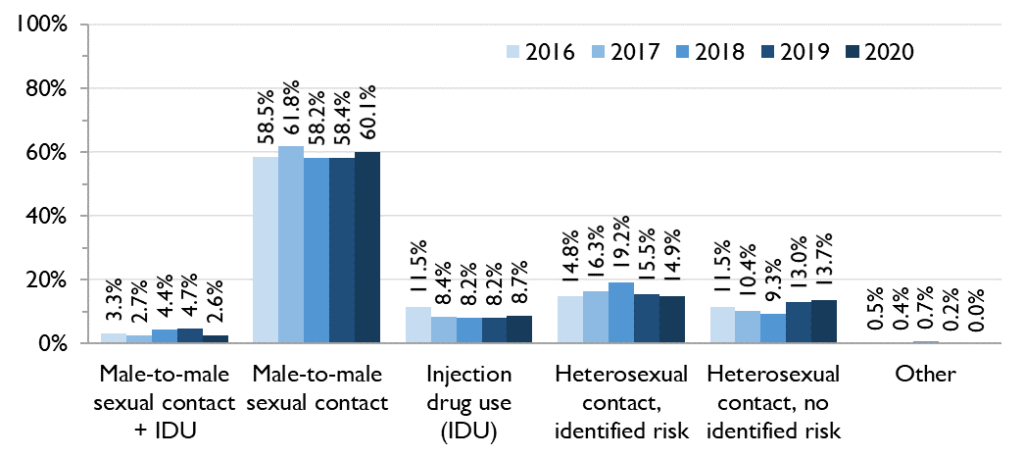
Though the numbers of first-time HIV diagnoses (where reported) decreased in all HIV exposure categories in 2020, the proportional breakdown across the categories remained similar. Male-to-male sexual contact continued to be the most commonly reported mode of HIV transmission in 2020, accounting for 60.1% of first-time HIV diagnoses where HIV exposure category was reported. HIV exposure category was not reported for 33.4% of diagnoses in 2020.
Decrease in first-time diagnoses mainly due to fewer diagnoses in white males and Black females
Figure 4a. Number of first-time HIV diagnoses by race/ethnicity, males, Ontario, 2016 to 2020
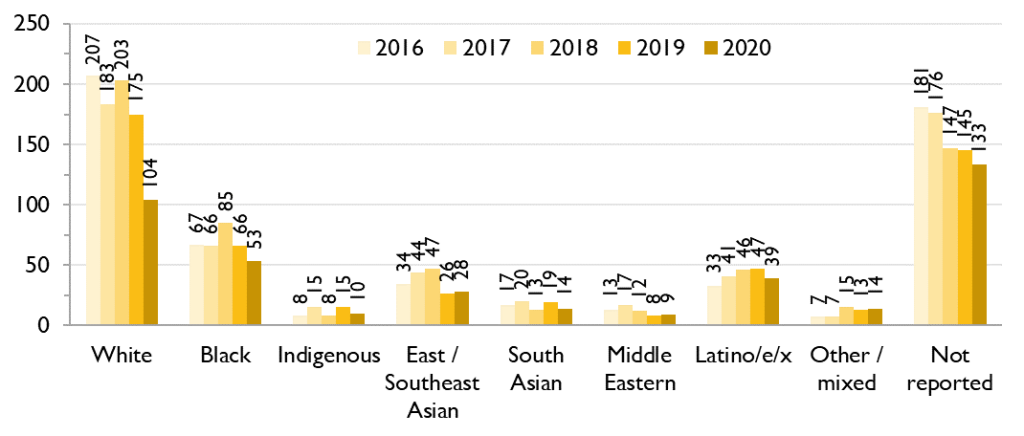
Figure 4b. Number of first-time HIV diagnoses by race/ethnicity, females, Ontario, 2016 to 2020
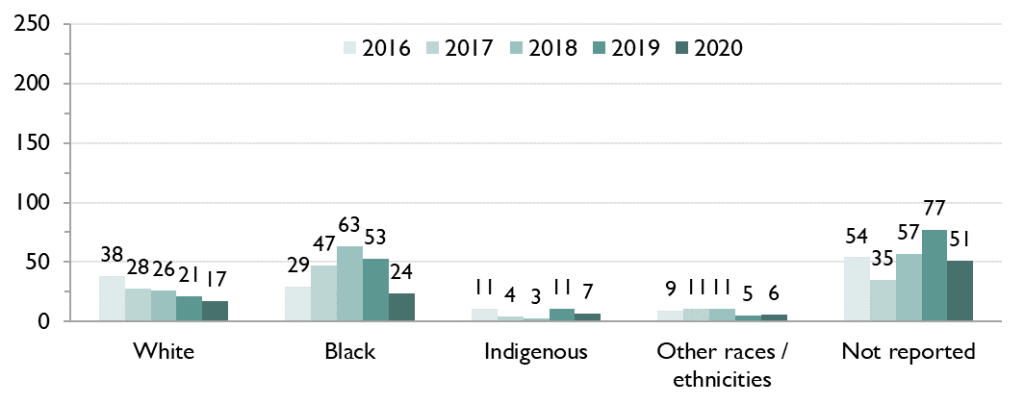
Between 2019 and 2020, the largest decreases in numbers of first-time HIV diagnoses were in white males (from 175 to 104, making up 42% of the overall decrease in diagnoses) and Black females (from 53 to 24, making up 17% of the overall decrease in diagnoses).
Decrease in rate of diagnoses was not universal across regions
Figure 5: Rate of first-time HIV diagnoses per 100,000 people by health region, Ontario, 2016 to 2020

Compared to 2019, the rate of first-time HIV diagnoses per 100,000 people decreased in all regions except Ottawa and Eastern, with the largest relative decreases in the South West (36.1%), followed by Toronto (30.0%) and Central East regions (29.0%).
No priority population was disproportionately impacted by reduced HIV testing
In terms of first-time diagnoses by the five populations most affected by HIV (which are not mutually exclusive), the number of diagnoses declined in all groups in 2020 compared to 2019, but there was little change in the distribution of diagnoses across groups. This finding likely indicates that no one population was disproportionately affected by the decrease in HIV testing. This new report on HIV diagnoses in Ontario 2020 includes sections for each of these five populations, with breakdowns within each.
Stay tuned for more OHESI reports coming soon!
__________
OHESI is a collaboration involving AIDS and Hepatitis C Programs of the Ontario Ministry of Health, Public Health Ontario, the Public Health Agency of Canada, and the Ontario HIV Treatment Network. The objectives of OHESI are to analyze, monitor and disseminate knowledge products on the epidemiology of HIV in Ontario.

